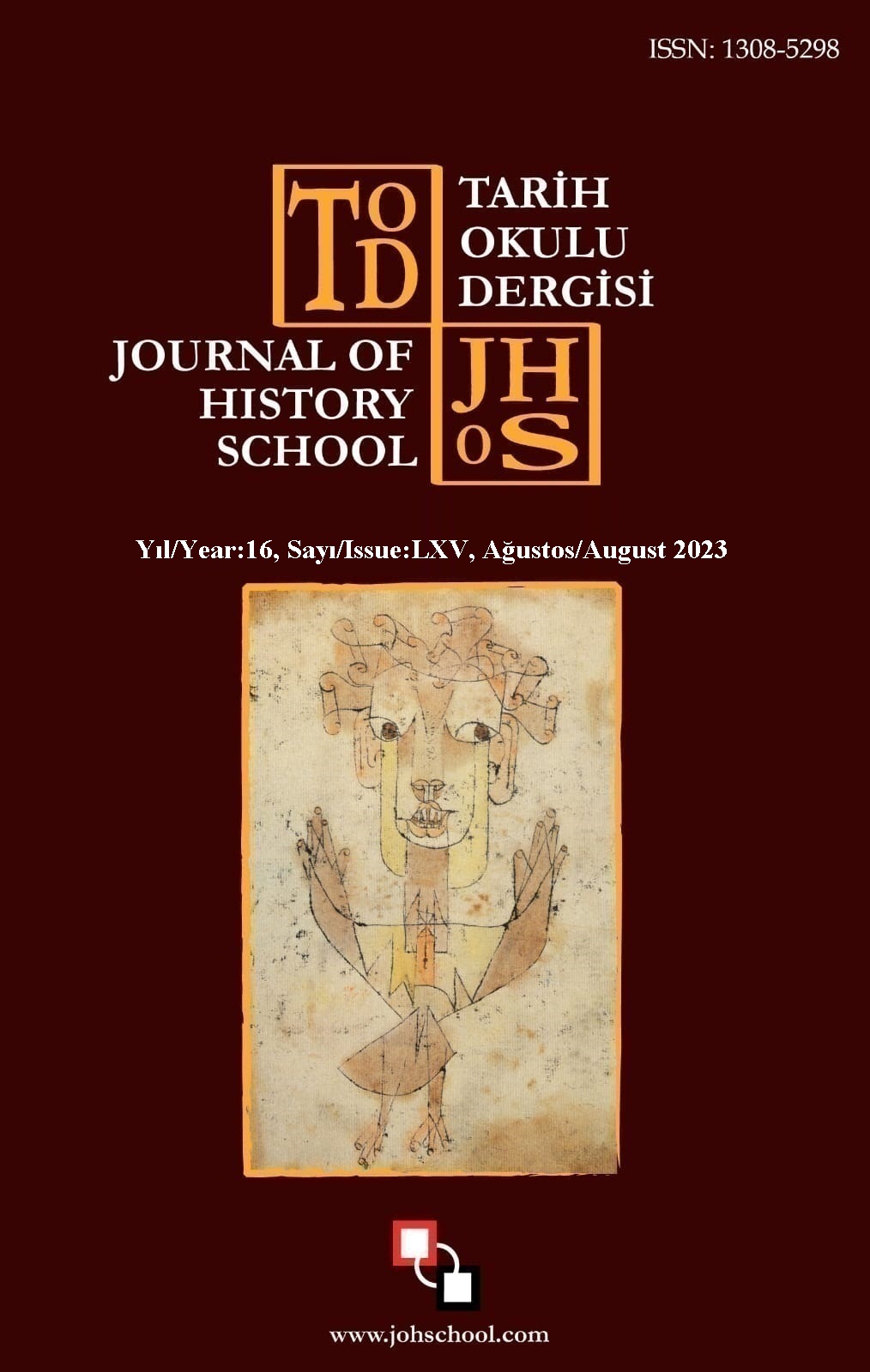Author :
Abstract
Bu çalışma, günümüzün önemli küresel sorunlarından göçün, yaşandığı coğrafyalardaki etkisi üzerine oluşturulmuştur. Özellikle savaş ve iç çatışmalar sonucu zorunlu olarak ülkelerini terk etmek zorunda kalan insanların sığındıkları ülkelerde karşılaştıkları problemler ele alınarak bunların çözümüne ilişkin birtakım incelemelerde bulunularak bunlar içerisinde sanatın, problemin çözümüne ilişkin sunduğu katkıyı somut örneklerle ortaya koymaktadır. Tarih boyunca farklı coğrafyalardan göç alan Anadolu, medeniyetlerin beşiği ile anılan, farklılıklarıyla zengin bir ülke olmuştur. Çoğu zaman isteğe bağlı olarak gerçekleştirilen bu göçlerin yanı sıra zorunlu hallerde de gerçekleştirilen kitlesel göçler de olmuştur. Son yıllarda yaşanan Suriye iç savaşı sonucunda ülkelerini terk etmek zorunda kalan binlerce Suriyeli, hayatlarını devam ettirebilme umuduyla Türkiye’ye ve farklı ülkelere göç etmişlerdir. Ancak ana dillerinin farklı olması, farklı kültürel değerlere sahip olmaları gibi durumlardan ötürü bu insanların sığındıkları bu yeni ülkeye adapte olmalarında birtakım zorluklarla karşılaşmaları kaçınılmaz olmuştur. Türkiye Cumhuriyeti Devleti’nin, bu insanların hayatlarını kolaylaştırmaya yönelik birtakım sosyal-eğitsel uyum çalışmaları gerçekleştirilmiştir. Bu kapsamda yapılan çalışmalar arasında Türkiye’de Suriyeli mültecilerin çoğunlukta olduğu mülteci kampların birinde gerçekleştirilen sanatsal bir projenin, bu insanların ev sahibi ülkeye entegre edilmesindeki katkıları üzerinde durulmuştur. Tarih boyunca sanatın evrenselliği, çağın sorunları karşısındaki etkisi ve sorunların çözümüne ilişkin yapıcı rolü birçok tarihsel kayıtlarda mevcuttur. Bu bilginin ışığında Türkiye’nin Malatya kentinde bulunan Malatya Mülteci Kampı’nda gerçekleştirilen “Gri Hayatları Renklendiriyoruz” adlı sanatsal projenin; mülteci bireylerin hayatlarını iyileştirebilme, onarabilme amaçlarının yanı sıra onların ev sahibi ülkeye uyum sağlamalarını kolaylaştırıcı hedeflerin gerçekleştirildiğini ifade eden görsel örneklerle çalışmaya katkı sağlanmıştır.
Keywords
Abstract
This study has been written on the impact of migration, one of the most important global problems of today, on the geographies migration is experienced. Specifically, the problems faced by people were forced to leave their countries due to wars and internal conflicts were discussed; some examinations were made regarding their solution, and the contribution of art to the solution of the problem was presented with concrete examples. Anatolia, which has been migrated from different geographies throughout history, has become a region which is rich of multiple cultures. In addition to these migrations, there have also been mass migrations due to compulsory situations. Thousands of Syrians had to leave their countries due to the Syrian civil war in recent years, migrated to Turkey and different countries in the hope of continuing their lives. However, because of language and cultural differences, it has become inevitable for these people to encounter some difficulties in adapting to this new country they have sought refugee in. Several social-educational adaptation studies have been carried out by the Turkey to facilitate the lives of these people. Among the studies conducted in this context, the contribution of an artistic project conducted in one of the refugee camps where Syrian refugees in Turkey are majority, to the integration of these people into the host country was emphasized. Throughout history, the universality of art, its impact on the problems of the era, and its constructive role in solving the problems are available in many historical records. In the light of this information, in the artistic project titled "We Color Gray Lives" conducted in a Refugee Camp in Malatya, Turkey, the study was contributed with examples stating the goals of improving and repairing the lives of refugees and their goals facilitating their adaptation to the host country were also achieved.





